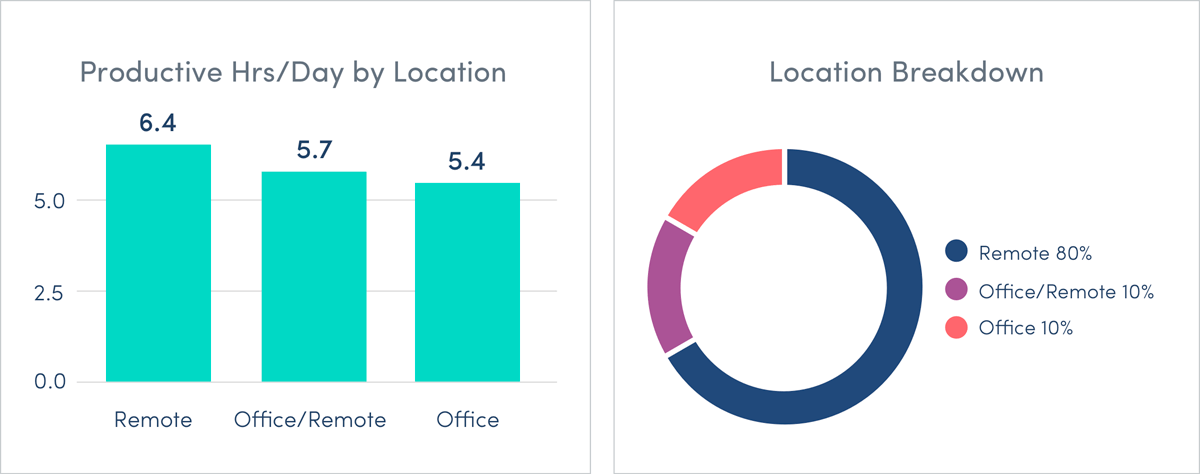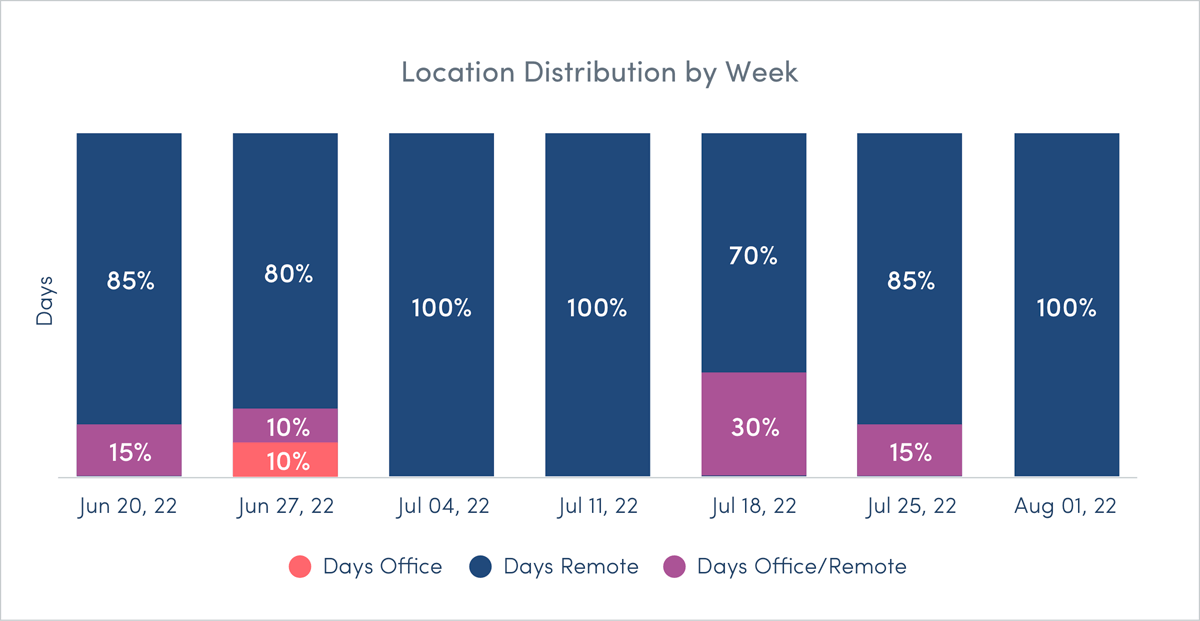I spent my early career as a workplace strategist and change management consultant at leading global architecture firms. During my ten-year tenure, I collected over 20 badges from client sites. They have all since been deactivated and recycled but ranged in material composition and technological sophistication - from basic to biometric. Each swipe granted access to unique spaces and resources. An entry door, an elevator, a printer, or in my favorite case, access to custom temperature and white noise controls for my individual workspace.
While I greatly value the flexibility of my now remote-first working environment, I miss the thermal and acoustic comfort that each badge and innovative workspace provided me - world-class amenities that I cannot replicate in my turn of the previous century apartment.
Among other terms, I have news alerts set for RTO (return to office), WFH (work from home) and WFA (work from anywhere). What my TOTPCA (turn of the previous century apartment) lacks in air conditioning it makes up for in charm, supplemented by company policies that ensure all employees have a comfortable and productive workspace. Acronyms aside, news alerts for RTO and the various operating models from which employees are returning flag countless articles on a polarizing issue with the majority of articles noting that badge data may be used to measure adherence to workplace policies.
In addition to their foundational role in secure access control, badges remain the primary method of capturing occupancy data for companies of all industries and sizes. However, the varying levels of encoding metrics and integration with different doors and devices cannot account for other, more nuanced behaviors that enable more informed, dynamic decision-making.
The main flaw in overreliance on badge data is the lack of accuracy. Occupancy sensor innovators, Density, found that on any given day, 20% of workers don’t badge in when entering the workplace. Relying on badge activity as a single source of data provides an incomplete picture of occupancy rates and no visibility into other dimensions of workplace performance.
Location Insights
ActivTrak’s Location Insights provides objective data about where employees work, and visibility into where they work best, to drive performance improvement, optimize workforce operations and elevate the employee experience. With Location Insights, organizations have access to out-of-the-box insights into remote vs. in-office work, can quickly correlate location to productivity and work habits, determine office space requirements and validate compliance with work policies.
Get out-of-the-box insights into remote vs. in-office work
Automatically detect whether employees are remote or in-office, even when connected to a VPN or remote desktop. Our data collection process does not require any input or action from the employee.
- Identify employee location out of the box. Location detection is fully automated, with the option to provide a supplementary list of IPs.
- Determine remote vs. office location even when employees are connected to a VPN or remote desktop.
- Don’t rely on IP address alone — our location detection model incorporates unique on-device signals to improve the accuracy of location data.
Determine office space requirements
Maximize the value of real estate investments with insight into office utilization. Our location detection model captures an accurate calculation of actual occupancy.
- See how often hybrid employees are in the office to determine how much space is needed on a regular basis.
- Support a cost-benefit analysis of closing an office or reducing its footprint.
- Determine whether hybrid work policies should be amended to encourage more frequent office usage.
Correlate location to productivity and work habits
Develop the optimal hybrid work policy for your organization with location-based productivity data. Base decisions on objective data, not self-reporting or anecdotes.
- Determine whether employees are more productive when working in the office, remotely or hybrid.
- Identify trends in working hours by location, like later start times due to an office commute or longer days due to the always-on nature of remote work.
- Compare individual productivity to understand who works best in which environment.

Validate compliance with work policies
Understand who is in the office and when with accurate, comprehensive location analysis. Insights go beyond confirming attendance.
- View an org- or team-level breakdown of days spent in the office, remote and hybrid to gauge compliance with workplace policies.
- Assess office utilization over time to learn the effect of policy changes.
- See how many days each team member spent in the office over a given time period.

Employee frustrations with return to office plans, while centered around potential loss of flexibility, are often compounded by perceived “back-pedaling” of policy statements. However, such changes are part of growth, not failure, and reflect a company’s commitment to landing on the most realistic, relevant workplace policy and practices that support the often competing interests of individual contributors and executives as equitably as possible.
When creating or formalizing a hybrid work policy, consider the following tips as a reasonable starting point for determining the number of days employees would benefit from being in the office.
- Tally the hours per week of activities that are best conducted in person. Relational and adaptive gatherings, designed to strengthen connections or address complex or sensitive topics, often benefit from in-person, on-site options. Round these hours to the nearest day equivalent.
- Select “anchor days” with the appropriate cadence to have employees gather in person and support remote work on the remaining days. Those “anchor days” become more meaningful and strategic to promote a more productive and vibrant workplace culture.
Validate compliance with hybrid work policies: Customer case
A Computer Services industry company business unit of over 500 employees implemented a hybrid working model for a group of employees. While hybrid employees record 9% (42 minutes) less productive time when in office than when working remotely, they are still operating within their org-wide goals and above industry peer benchmarks.
Location Insights enables leaders to confirm that teams and individuals are on-site with the agreed-upon frequency and maintain other key performance metrics.


